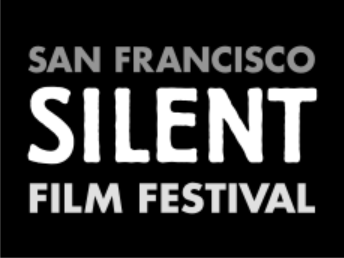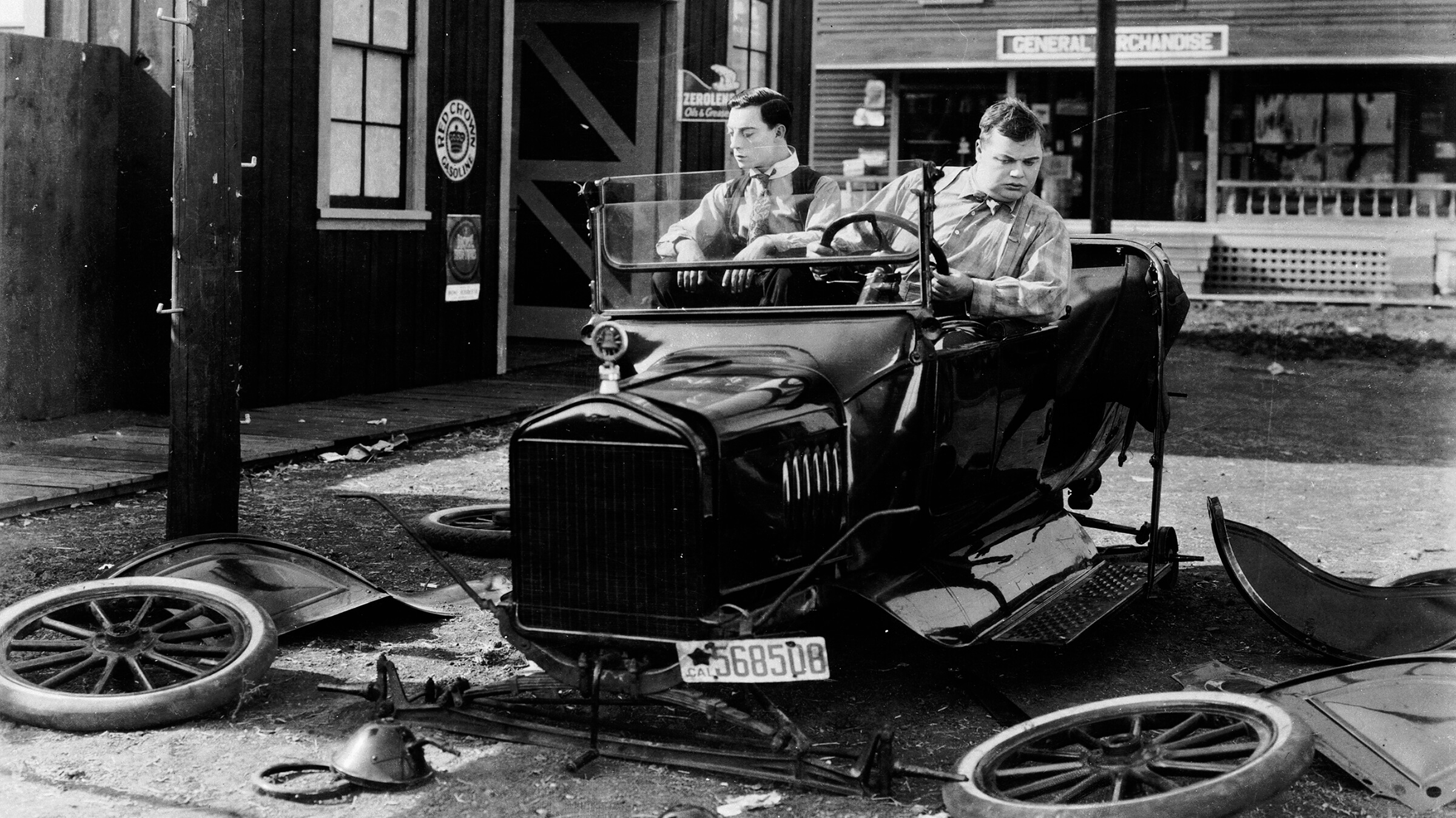Featuring two modern jesters inspired by the great comedians of the silent era
Larry Pisoni cofounded The Pickle Family Circus, the first “new circus” to rely on clowns, jugglers, and acrobats without animals, in 1974. He taught clowning at the Ringling Brothers Clown College, and appeared in Robert Altman’s Popeye (1980).
Geoff Hoyle was a Pickle from 1975–1981 and went on to Cirque du Soleil and Circus Flora. He created the role of Zazu in Disney’s The Lion King on Broadway. His solo shows Feast of Fools and The Convict’s Return have traveled to London, New York, and Paris.
And featuring these great silent comedians:
Roscoe “Fatty” Arbuckle was the first comedian to abandon short films for features. His physical agility allowed him to use his size comically without self-mockery. Today, Arbuckle is remembered for a 1921 sex scandal. Although he was acquitted (and received an apology from the jury), his career never recovered.
Monty Banks played the average guy in impossible circumstances, as in the 1927 Play Safe. In The Grocery Clerk (1920), he sends up Rudolph Valentino as “he-vamp.”
Billy Bevan was an Australian typically cast as an opportunistic philanderer and hustler, roles which contrasted with the persona suggested by his signature brush moustache. His films frequently contain sexually suggestive scenes, as in Wall Street Blues, where he operates a vacuum cleaner that “accidentally” removes a typist’s shoes and stockings.
Charlie Chaplin—the Little Tramp—is the most recognized character from the silent era. The son of music-hall performers, Chaplin’s performing career started in 1894 at the age of five. In his earlier pictures, Chaplin frequently portrays less-than-sympathetic characters, like the con man in Tillie’s Punctured Romance (1915), the first American-produced feature-length comedy.
Charley Chase, a.k.a. Charley Parrott, was a vaudevillian who joined Mack Sennett’s Keystone Company in 1914. Chase generally portrayed a young man attached to the female lead, as in Love, Loot and a Crash (1915), or as a foil to a male lead, as in His Musical Career (1914). He ended his career directing the Three Stooges in a series of shorts at Columbia Pictures.
Buster Keaton (see article on Go West)
Lupino Lane relied on his acrobatic ability to get laughs. In Maid in Morocco, he makes a complete circuit of the walls of a theater’s proscenium arch. He frequently made use of trick panels in films like Sword Points (1928) and Joyland (1929).
Harry Langdon typically played a naïve man-child in whiteface and was considered among the top draws in the mid-’20s. The films made with Frank Capra (e.g. 1927’s Long Pants) were all successful, but Langdon’s first film without Capra’s participation, Three’s a Crowd (1927) was mawkishly sentimental, and moviegoers lost interest.
Stan Laurel and Oliver Hardy each had successful film careers prior to their partnership, which was suggested by fellow Hal Roach stablemate Leo McCarey after seeing them together in films such as Lucky Dog (1917). Laurel’s child-like naïveté combined with Hardy’s blustering ignorance to create a uniquely charming co-dependent on-screen relationship.
Max Linder was one of the earliest comedy stars; Charlie Chaplin admitted to being influenced by the French comedian. His standard act was as a Parisian man-about-town who finds trouble, usually while engaged in un recherche d’une femme.
Harold Lloyd, one of the top comedians of the 1920s, was the personification of the phrase “comedy is a man in trouble.” He specialized in outlandish stunts, such as (most famously) hanging from the hands of a clock on top of a high-rise building.
Mabel Normand is considered the best of the female silent comedians. Like her frequent costar Roscoe Arbuckle, scandal has obscured her on-screen accomplishments. She used her appearance to great comedic affect by engaging in the kind of broad physical comedy other ingénues wouldn’t (or couldn’t) handle. In A Muddy Romance (1913), she gets a pie in the face and is later dragged through mud.
AI St. John was Roscoe Arbuckle’s nephew, and he got his first acting job by performing on a trick bicycle for Mack Sennett. He appeared frequently as a Keystone Cop and is also in most of Arbuckle’s shorts.
Larry Semon filled his films with gags, and they would usually end with a gasp-inducing stunt, such as driving a car up a telegraph pole, along the wires into the top floor of a house and downstairs into the basement, where it’s smashed by a pursuing police car, in Humbugs and Husbands (1918).
Mack Sennett laid the foundation for silent comedy with his Keystone Film Company. His pictures were invariably full of knockabout antics; the Keystone Cops made their first appearance in The Bangville Police (1913). Silent stars who worked for Sennett include Charlie Chaplin, Gloria Swanson, and Mabel Normand (Sennett’s real-life lover).
Ford Sterling typically appeared as a broad German caricature: villainous and/or swaggering and buffoonish, in films like Barney Oldfield’s Race for a Life. He was also the chief of the Keystone Cops in Our Daredevil Chief (1915) and other pictures.
Gloria Swanson was a popular comedian before achieving fame as a dramatic actress. In Keystone pictures like Teddy at the Throttle (1916), in which she is tied to railroad tracks, Swanson exhibits a genuine flair for physical comedy.
Ben Turpin is the most famous of several crossed-eyed comics, and he had a $25,000 Lloyd’s of London insurance policy, payable if his eyes ever uncrossed. His Keystone films were zany, such as Yukon Jake (1924), in which he plies the arctic with a mismatched dog team that includes a goat.
Bobby Vernon was Gloria Swanson’s leading man at Keystone in pictures like The Danger Girl (1916). He played young men afflicted by bizarre circumstances, as in Ride ’Em Cowboy (1927), in which he’s a car salesman bedeviled by outlaws in the West. The talkies ended his acting days, and he became a comedy supervisor at Paramount.
Billy West made his name by imitating Charlie Chaplin in films like The Hero (1917). He worked frequently with Charley Chase and Oliver Hardy. Later films, like Hard Boiled Yeggs (1926), feature West as a bumbling bon vivant.
Presented at SFSFF 2003

